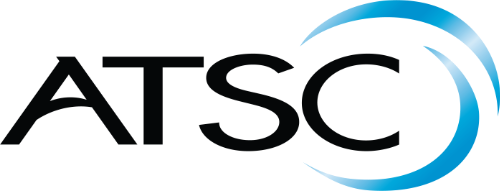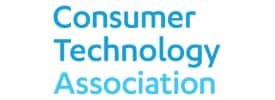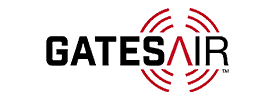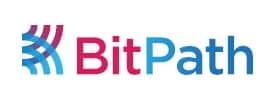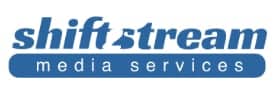ATSC 3.0 : Recommended Practices
An ATSC Recommended Practice is a document that states specifications or criteria within Advanced Television Systems that are not strictly necessary for effective implementation and interoperability, but that are thought to be advisable and may improve the efficiency of implementation or reduce the probability of implementation errors. An ATSC Recommended Practice may specify preferred methodology for implementation and operation and may recommend a choice from among alternatives.
Documents are provided in the links below in the Acrobat (PDF) format.
-
A/325, “ATSC 3.0 PHY Lab Performance Test Plan”Most Recent Document Approved: 3 April 2024
This document summarizes processes used to test the RF performance of ATSC 3.0 in a laboratory environment. The intention of this document is to describe test processes and test results for manufacturers attempting to verify RF performance of their receiver’s physical layer designs. This document should be used by manufacturers to ensure their lab testing is conducted consistently and can be independently verified by the ATSC 3.0 development team.
Download current version: A/325:2024-04, “ATSC 3.0 PHY Lab Performance Test Plan”, 3 April 2024.
Previous Versions
There are multiple versions of this document. Please be sure to download the desired version. For amendments, the text includes a list of changes, the rationale for the changes, and compatibility considerations.
Download A/325:2018, “ATSC 3.0 PHY Lab Performance Test Plan”, approved 10 December 2018.
Download A/325:2018 Corrigendum No. 1, approved 28 October 2020.
Download A/325:2018, “ATSC 3.0 PHY Lab Performance Test Plan, with Corrigendum No. 1”. This document has Corrigendum No. 1 integrated into the Recommended Practice.
Download A/325:2022-03, “ATSC 3.0 PHY Lab Performance Test Plan”, 31 March 2022.
Download A/325:2023-03, “ATSC 3.0 PHY Lab Performance Test Plan”, 28 March 2023.
Download A/325:2023-03 Corrigendum No. 1”, approved 21 April 2023.
Download A/325:2023-04, “ATSC 3.0 PHY Lab Performance Test Plan”, 21 April 2023.
-
A/326, “ATSC 3.0 Field Test Plan”Most Recent Document Approved: 3 April 2024
This document presents the objectives of, and general methodology for, conducting field tests of the ATSC 3.0 over-the-air (OTA) terrestrial digital television (DTV) system. The physical layer of this DTV standard provides a comprehensive and flexible tool-box of configuration options and features for digital broadcast transmission, and allows broadcasters to pursue many different modulation and coding configurations. The intention of this document is to summarize and describe RF field environment performance test processes, and provide analysis for manufacturers attempting to verify functionality of their receiver’s physical layer design or for broadcasters trying to evaluate coverage and service in their market. This document should be used by manufacturers and broadcasters to ensure their field testing is conducted with a consistent methodology.
Download current version: A/326:2024-04, “ATSC 3.0 Field Test Plan”, 3 April 2024.
Previous Versions
There are multiple versions of this document. Please be sure to download the desired version. For amendments, the text includes a list of changes, the rationale for the changes, and compatibility considerations
Download A/326:2017, “ATSC 3.0 Field Test Plan”, approved 22 February 2017.
Download A/326:2022-03, “ATSC 3.0 Field Test Plan”, 31 March 2022.
Download A/326:2023-03, “ATSC 3.0 Field Test Plan”, 31 March 2023.
Download A/326:2023-03 Corrigendum No. 1″, approved 24 April 2023.
Download A/326:2023-04, “ATSC 3.0 Field Test Plan”, 24 April 2023.
-
A/327, “Guidelines for the Physical Layer Protocol”Most Recent Document Approved: 3 April 2024
This document provides recommended practices for the ATSC 3.0 physical layer protocol standards specified by A/321 and A/322. The intent of this document is to make recommendations for physical layer operating modes so that readers can make informed decisions about physical layer configurations. Also, this document provides some implementation guidelines to aid with flexible configurations of physical layer design resources in transmitter and receiver manufacturers’ equipment.
Download current version: A/327:2024-04, “Guidelines for the Physical Layer Protocol”, 3 April 2024.
Previous Versions
There are multiple versions of this document. Please be sure to download the desired version. For amendments, the text includes a list of changes, the rationale for the changes, and compatibility considerations
Download A/327:2018, “Guidelines for the Physical Layer Protocol“, approved 2 October 2018.
Download A/327: 2018 Amendment No. 1, “BSID”, approved 26 November 2019.
Download A/327:2020, “Guidelines for the Physical Layer Protocol”, approved 30 January 2020.
Download A/327:2021, “Guidelines for the Physical Layer Protocol”, approved 25 January 2021.
Download A/327:2022-03, “Guidelines for the Physical Layer Protocol”, published 31 March 2022.
Download A/327:2022-03 Amendment No. 1, “Field Issues Annex”, approved 1 December 2022.
Download A/327:2022-12, “Guidelines for the Physical Layer Protocol”, 1 December 2022.
Download A/327:2023-03, “Guidelines for the Physical Layer Protocol”, 28 March 2023.
Download A/327:2023-03 Amendment No. 1, “PHY Profiles”, approved 16 June 2023.
Download A/327:2023-06, “Guidelines for the Physical Layer Protocol”, 16 June 2023.
-
A/339, “Audio Watermark Modification and Erasure”Most Recent Document Approved: 3 April 2024
This document provides recommended practices for methods to be employed in the erasure and modification of VP1 audio watermarks.
Download current version: A/339:2024-04, “Audio Watermark Modification and Erasure”, 3 April 2024.
Previous Versions
There are multiple versions of this document. Please be sure to download the desired version. For amendments, the text includes a list of changes, the rationale for the changes, and compatibility considerations.
Download A/339:2017, “Audio Watermark Modification and Erasure”, approved 4 December 2017.
Download A/339:2022-03, “Audio Watermark Modification and Erasure”, 31 March 2022.
Download A/339:2023-03, “Audio Watermark Modification and Erasure”, 28 March 2023.
-
A/350, “Guide to the Link-Layer Protocol”Most Recent Document Approved: 3 April 2024
This document provides recommended practices for the ATSC Link-layer Protocol (ALP) standard specified by A/330.
Download current version: A/350:2024-04, “Guide to the Link-Layer Protocol”, 3 April 2024.
Previous Versions
There are multiple versions of this document. Please be sure to download the desired version. For amendments, the text includes a list of changes, the rationale for the changes, and compatibility considerations.
Download A/350:2019, “Guide to the Link-Layer Protocol”, approved 19 July 2019.
Download A/350:2022-03, “Guide to the Link-Layer Protocol”, 31 March 2022.
Download A/350:2023-03, “Guide to the Link-Layer Protocol”, 28 March 2023.
-
A/351, “Techniques for Signaling, Delivery and Synchronization”Most Recent Document Approved: 3 April 2024
This document provides recommended practices for the ATSC 3.0 Signaling, Delivery, Synchronization, and Error Protection standard as specified in A/331. The document contains recommendations for broadcasters on the usage of the ROUTE and MMTP protocols and their associated technical capabilities in support of different Service delivery scenarios. In addition, transmission-related guidelines are provided on a variety of other functions and mechanisms as defined in A/331 including Service and audio language signaling, advanced emergency information, Staggercast, and the mapping between Service delivery and lower layer transport.
Download current version: A/351:2024-04, “Techniques for Signaling, Delivery, and Synchronization”, 3 April 2024.
Previous Versions
There are multiple versions of this document. Please be sure to download the desired version. For amendments, the text includes a list of changes, the rationale for the changes, and compatibility considerations.
Download A/351:2019, “Techniques for Signaling, Delivery, and Synchronization”, approved 28 August 2019.
Download A/351:2019 Amendment No. 1, “appContextID”, approved 20 January 2020.
Download A/351:2019 Amendment No. 2, “appContextID”, approved 15 February 2021.
Download A/351:2021, “Techniques for Signaling, Delivery, and Synchronization”, 15 February 2021. This document is a rollup of Amendments No. 1 and No. 2 to A/351:2019.
Download A/351:2022-03, “Techniques for Signaling, Delivery, and Synchronization”, 31 March 2022.
Download A/351:2023-03, “Techniques for Signaling, Delivery, and Synchronization”, 28 March 2023.
-
A/361, “Security and Content Protection”Most Recent Document Approved: 3 April 2024
This Recommended Practice describes recommended operational modes and parameters for implementation of the security features (excluding DRM) described in ATSC A/360, “ATSC 3.0 Security and Service Protection.”
Download current version: A/361:2024-04, “Security and Content Protection”, 3 April 2024.
Previous Versions
There are multiple versions of this document. Please be sure to download the desired version. For amendments, the text includes a list of changes, the rationale for the changes, and compatibility considerations.
Download A/361:2019, “Security and Content Protection”, approved 10 December 2019.
Download A/361:2022-03, “Security and Content Protection”, 31 March 2022.
Download A/361:2023-03, “Security and Content Protection”, 28 March 2023.
-
A/362, “Digital Rights Management (DRM)”Most Recent Document Approved: 3 April 2024
This Recommended Practice provides best industry practices for implementers of ATSC Standard A/360, “ATSC 3.0 Security and Service Protection,” and the security and content protection provisions of A/344, “ATSC 3.0 Interactive Content″.
Download current version: A/362:2024-04, “Digital Rights Management (DRM)”, 3 April 2024.
Previous Versions
There are multiple versions of this document. Please be sure to download the desired version. For amendments, the text includes a list of changes, the rationale for the changes, and compatibility considerations.
Download A/362:2020, “Digital Rights Management (DRM)”, approved 17 January 2020.
Download A/362:2022-03, “Digital Rights Management (DRM)”, 31 March 2022.
Download A/362:2023-02, “Digital Rights Management (DRM)”, approved 20 February 2023.
Download A/362:2023-03, “Digital Rights Management (DRM)”, 28 March 2023.
Download A/362:2023-03 Amendment No. 1, “DRM Operation for MMT”, approved 14 February 2024.
Download A/362:2024-02, “Digital Rights Management (DRM)”, 14 February 2024.
-
A/370, “Conversion of ATSC 3.0 Services for Redistribution”Most Recent Document Approved: 3 April 2024
This document provides recommended practices for the conversion of ATSC 3.0 services for redistribution into ATSC 1.0 and other legacy services. Hardware or software products can be built to implement conversions of ATSC 3.0 services and signals to formats suitable for various redistribution systems or over-the-air broadcast translators. Such conversions might require certain methods for physical layer transmission, transport, audio, video, closed captioning, and ancillary data formats.
Download current version: A/370:2024-04, “Conversion of ATSC 3.0 Services for Redistribution”, 3 April 2024.
Previous Versions
There are multiple versions of this document. Please be sure to download the desired version. For amendments, the text includes a list of changes, the rationale for the changes, and compatibility considerations.
Download A/370:2019, “Conversion of ATSC 3.0 Services for Redistribution”, approved 11 December 2019.
Download A/370:2022-03, “Conversion of ATSC 3.0 Services for Redistribution”, 31 March 2022.
Download A/370:2023-03, “Conversion of ATSC 3.0 Services for Redistribution”, 28 March 2023.
-
A/380, “Haptics for ATSC 3.0”Most Recent Document Approved: 3 April 2024
This document provides recommended practices for adding haptics functionality to ATSC 3.0 broadcast (and broadband) content when viewed on mobile devices with built-in haptic actuators, such as smartphones and tablets.
Download current version: A/380:2024-04, “Haptics for ATSC 3.0”, 3 April 2024.
Previous Versions
There are multiple versions of this document. Please be sure to download the desired version. For amendments, the text includes a list of changes, the rationale for the changes, and compatibility considerations.
Download A/380:2021, “Haptics for ATSC 3.0”, approved 3 February 2021.
Download A/380:2022-03, “Haptics for ATSC 3.0”, 31 March 2022.
Download A/380:2023-03, “Haptics for ATSC 3.0”, 28 March 2023.
Subscribe to our Newsletter
Subscribe to The Standard, our monthly newsletter, to stay up-to-date with ATSC news and events around the world.
